Good African Coffee, Uganda
Along snow-capped mountains in Kasese district, in the west of the Republic of Uganda (Uganda), coffee farmers are beginning to realize a dream that has eluded them for generations. By coming together into co-operatives, working with entrepreneurs, improving their production processes, and developing quality coffee products, the farmers have successfully broken into the international market.
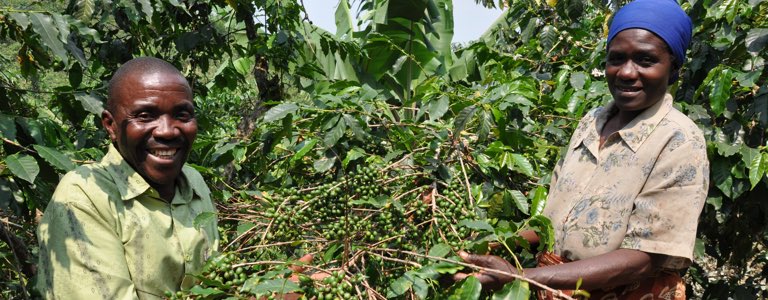
As a result, Kasese’s coffee producers have increased their income, opened new business streams and enhanced their social capacity. In addition, farmers in the region are beginning to develop a strong sense of entrepreneurship, self-sufficiency and pride.
Pivotal to the coffee producers’ success is Good African Coffee Limited (GAC), a coffee manufacturing and marketing company based in Kampala, the capital of Uganda. Established in 2003, GAC has not only raised standards for farmers in Kasese district; the coffee maker has also invested in new production processes and created value-added, quality products and brands.
In so doing, the company has competed against established international rivals and pioneered a new business model – based on community partnership, innovation and competitiveness – for marginalized producers around the world.
Traditional knowledge
Coffee plant varieties – including robusta (Coffea canephora), a shrub that originates in sub-Saharan Africa – have been grown in Uganda and used for socio-economic purposes for centuries. Arabica coffee (Coffea arabica), moreover, which is indigenous to Arabian Peninsula, has flourished in the cool, moist, high altitude (more than 5,000 meters) and fertile soils of the Rwenzori Mountains range – an area in western Uganda known as the “mountains of the moon.”
Smallholder farmers in these mountains have traditionally planted Arabica during the wet and dry seasons with harvests occurring twice a year (between August and November; and March and April). Usually living and working in family units, such producers customarily picked and shelled coffee beans by hand before preparing them via a “dry” process – where the beans are harvested and set out to dry under the sun before being gathered and sold. These crops, furthermore, were often grown under the shade provided by other plants (such as banana trees) as a means of aiding cultivation.
Due to Uganda’s coffee cultivating success (which was managed through a government-run coffee marketing board), by the 1960s the country was the number one exporter of the crop in Africa. Soon thereafter (beginning in the 1970s), however, coffee growers in the country labored under unfavorable socio-economic conditions which included high taxation, price fluctuations, lack of direct access to international markets, insufficient capital investment and, especially, civil unrest. As a result, coffee production dropped and most of the region’s farmers eked a meager living on the verge of indebtedness and poverty.
Following a return to relative peace in the country (since the mid- 1980s) and the liberalization of Uganda’s economy (in the early 1990s), the country’s producers began to explore new business opportunities and to hope for a better future. A key component in this economic revival – including the rejuvenation of the Kasese region’s coffee growing tradition – has been the advent of commercial expertise and investment stimulus provided by small and medium sized enterprises (SMEs) such as GAC.
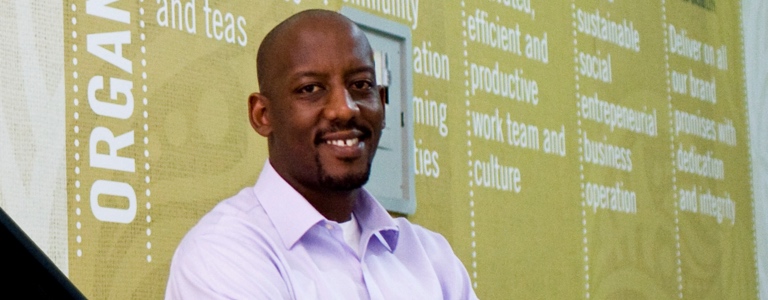
Research and development, financing and partnerships
Formerly called the Rwenzori Finest Coffee Company (between 2003 and 2006), GAC was established by Andrew Rugasira, a Ugandan entrepreneur educated in law and economics. Before establishing the coffee company, Mr. Rugasira inherited the family chalk manufacturing business in the early 1990s.
When the business closed due to stiff competition from cheaper imports, in 1994 the entrepreneur founded VR Promotions (VR) – an events management and marketing company based in Kampala. During his relatively successful time at VR, the entrepreneur first entertained the idea of supporting the rural community in Kasese through marketing coffee. Eight years after creating the marketing company, he established Good African Coffee.
The beginning of Mr. Rugasira’s new company was marked by risk, lack of capital and several setbacks. In the first two years of GAC’s development, the entrepreneur engaged in comprehensive research and development (R&D) into coffee production that met with several challenges. One of them was finding out how to gain farmers’ trust and encourage producers to adopt new production procedures and organize into cooperatives – including savings and credits unions (a general reluctance to join such unions was due to long-held suspicions by the farmers of outsiders and middle-men credit lenders).
Through a series of meetings and discussions with village elders and farmers in Kasese, however, the entrepreneur was able to make a persuasive case. As Mr. Rugasira said, “We encouraged [producers] to believe that they’re not only the solution to their own problem; but if they [also] pulled their resources together, then – as small and seemingly poor farmers, as a group – they would have serious potential; they would have capital; and they would have opportunities to create transformation in their communities.”
Having succeeded in organizing producer organizations (PO) in the region into groups of about 50 members, each PO was empowered to identify and select a committee of leaders who would be trained in the best practices for coffee cultivation (including pruning and mulching method for coffee beans). These leaders (who included both male and female representatives in order to ensure the company’s commitment to gender diversity), in turn, would disseminate the new information to the rest of the community. Indeed, “[the producers] did all the knowledge transfers within their own communities,” Mr. Rugasira said. “They took up the training themselves with enthusiasm and passed it on to other farmers within the Rwenzori Mountains [and] managed the producer-groups themselves.”
As part of the R&D process, the entrepreneur collected important data (such as acreage per farm; average yields; and total members per family) based on surveys of producers. Due to such interviews, Mr. Rugasira discovered, for instance, that the average plot held by a farmer was one acre, which produced approximately 300 kilograms (kg) of coffee per season. With this information, the entrepreneur was able to develop GAC’s business plan – including defining those areas that required immediate intervention (such as coffee cultivation training for producers) and made projections for moving the company forward.
Based on this initial and comprehensive research, Mr. Rugasira implemented farmer training procedures and new production processes. These included transforming coffee cultivation in the region from a traditionally “dry” production process to a “wet” one – where the beans are immersed in water and thereby separated into good quality, those that sink, and bad quality, those that float, seeds.
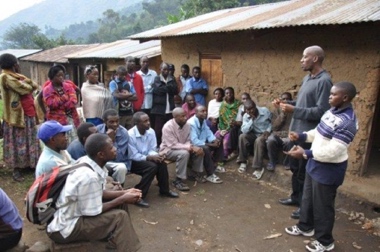
of about 50 members, each PO was empowered to identify and select
a committee of leaders who would be trained in best practices of coffee
production. Mr. Rugasira (pictured; standing to the right) with farmers
in Kasese (Photo: GAC)
GAC, moreover, invested in equipment for producers including manual pulping machines which separate a coffee bean from its outer shell – these were the first coffee production machines ever to be used in the region. Mr. Rugasira then created an incentive plan for producers (through which farmers were paid up to double their usual rates if they produced quality coffee beans) in order to encourage them to adopt the new machines and cultivation methods.
Despite these investments and incentives, the company faced other challenges in this period including how to access the latest value-adding technologies – such as a roasting machine – for coffee production. Without such machinery, GAC initially had to outsource key production processes – including coffee roasting and packaging – to a facility in the Republic of Ireland. By 2009, however, the company was able to purchase its own roasting and packaging equipment. In the same year, the newly purchased equipment was installed in a new company production plant in Kampala.
With this achievement, GAC became the first African-owned, vertically integrated coffee manufacturer (where the supply chain occurs under the same proprietor) in the continent with direct access to the European market. Because the company’s value-adding processes are no longer outsourced (which has resulted in cost savings for the company), and because GAC re-invests 50% of its profits in the Kasese community, Rwenzori coffee farmers have been able to increase investments for developing their socio-economic capacity. As of 2012, there were 14,000 coffee farmers from Kasese in GAC’s network of suppliers.
Apart from the R&D process, accessing capital investment and the necessary expertise to ensure growth and international competitiveness has been one of the greatest barriers to success for Mr. Rugasira and his company. Without an established venture capital community, ready access to credit, or a community of industry experts from whom to seek advice, Uganda proved to be a challenging environment for the entrepreneur to establish a company. As a result, GAC’s founder initially had to leverage personal assets including selling off VR and taking a loan on his house while searching for investment partners outside the country.
Branding and commercialization
In addition to seeking investors and partners, GAC’s founder was aware of the need to develop a comprehensive branding and commercialization strategy in order to successfully enter and compete in the international market. However, to do so the company had to overcome perhaps its greatest challenge: bridging the credibility gap. Trying to win the support of international retail partners and to assure them of the company’s capacity to deliver on its promises has been as challenging for Mr. Rugasira as gaining the trust of producers.
For instance, in 2004 when the entrepreneur initially attempted to commercialize his coffee products in Europe, he prepared a business plan with the aim to impress his vision upon major buyers in supermarkets in London, the United Kingdom (UK). Following several emails and phone calls to prospective buyers that went unanswered, however, Mr. Rugasira was left with few options other than to return empty-handed to Uganda.
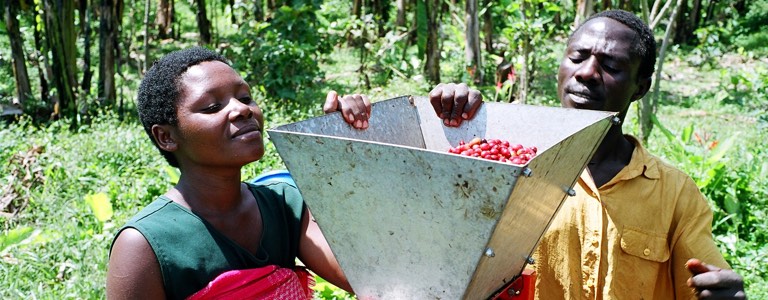
Three months later, the entrepreneur returned to London and made another attempt to enter into commercialization agreements with supermarkets. Once again, Mr. Rugasira was met with a wall of silence. Not only was his strategy not working; many potential buyers simply did not trust GAC to deliver on its promises to sustainably supply good quality coffee beans.
However, a few weeks after his second trip to London, embers of hope began to flicker when the entrepreneur received an invitation to present his business plan from Waitrose Limited (Waitrose), a well-known supermarket in the UK. After his twelfth trip to London in order to attend meetings with Waitrose’s executives, and with his funds running low, Mr. Rugasira finally secured GAC’s first commercialization agreement with a major food and beverage retailer in the UK.
To creatively promote the SME and secure more funding, Mr. Rugasira wrote an article about the GAC brand in The Guardian (Guardian) – a renowned national newspaper in the UK. While the Waitrose agreement and Guardian article raised both the company’s international profile and revenues, Mr. Rugasira was aware that GAC required a wider network of buyers and branding strategies in order to enjoy long-term commercial viability. In order to increase demand for GAC’s products, in 2005 the entrepreneur established a coffee shop – Good African Café – in Kampala.
With a commercialization agreement and exclusive coffee shop in hand, GAC’s founder was still determined to secure additional commercialization contracts in order to meet the increasing supply of producers. Running low on capital, Mr. Rugasira continued to pitch his business plan to attract new buyers in London. His persistence paid off when the entrepreneur secured the company’s most lucrative commercialization agreement in 2007 with Sainsbury’s Supermarkets Limited (Sainsbury’s), one of the largest nation-wide superstores in the UK.
Two years later, and riding the waves of success, Mr. Rugasira reached an agreement to commercialize GAC’s products in supermarkets in the United States of America (USA) – a country with an even bigger market than the UK for specialty-coffee. The agreement, which was based initially on Internet sales and then on a number of supermarkets in the country, was made between Mr. Rugasira and Kehe Distributors – a distribution company with wide access to supermarkets in the USA.
Parallel to these achievements, GAC created a new corporate identity (including adopting its current name in 2006) and developed a number of quality and well-packaged brands supported by a distinctive logo: a stylized image of a person with a likeness to the African continent.
Indeed, as early as 2005, when GAC entered commercialization contracts with Waitrose, the company developed a series of brands such as Rukoki Gold (a medium dry roast), Prestige, Espresso Roast (a combination of robusta and arabica beans), and Central Plains (a richly roasted blend). In the following year, GAC enhanced its product range when it launched a new line of brands including Freeze Dried Instant (made of 100% arabica beans), Rwenzori Mountains (a medium roast) and frozen coffee in small packets.
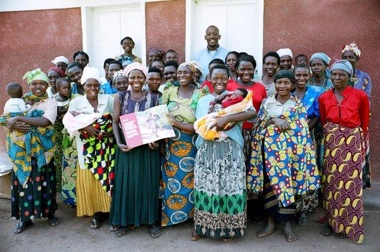
while supporting their entrepreneurial aspirations through the creation of
financial literacy programs, credit streams and individual savings accounts
for producers within community banks (Photo: GAC)
Having attained an impressive level of brand awareness and corporate prestige for GAC, Mr. Rugasira quickly became an international epitome of entrepreneurial action and success. Taking advantage of his new-found reputation, the entrepreneur engaged in a number of global product promotional activities in the media and via high profile placement of the company’s products in influential events and within important seats of power.
GAC’s coffees, for instance, were served to delegates who attended Mr. Rugasira’s many presentations on economics and development matters including his speeches at the House of Lords, the second chamber for lawmakers in the UK, and at the Group of Eight (G8) summit, an inter-governmental forum of the world’s leading economies. Mr. Rugasira has also expressed the goals and virtues of GAC via a number of press and media including appearances on the British Broadcasting Corporation and the Cable News Network media outlets.
In order to disseminate information to a growing base of international customers and supporters, furthermore, GAC has exploited a number of Internet-based tools including a professional corporate website (which features informative biographies of producers in Kasese) that has links to interactive social networks such as Facebook, Myspace and Twitter. Mr. Rugasira has also utilized a company blog, instant news feeds features, a newsletter, and the company’s You Tube channel in order to communicate the latest information on GAC’s brands, aims and achievements.
Having established a comprehensive commercialization and branding strategy, in 2012 GAC’s products and brands were available in numerous supermarkets around the world including Uganda (such as Uchumi, Game, Nakumatt and Shoprite), and the UK (Waitrose, Sainsbury’s, and Tesco plc).
In the same year, the company commercialized its coffee beans in the USA via an Internet shop facilitated by Eye level Solutions (ELS), a company that creates market access for specialty products, and via a number of supermarkets including Ultra Foods, Grocery Outlet and Orange Street Food Farm. In addition, GAC sold its coffee locally through a number of unique Good African Cafés in Kampala.
Trademarks and domain names
In order to secure the company’s entry into the international market, and to keep its avenues for future expansion open, GAC has relied on the intellectual property (IP) system. To this end, the SME registered two trademarks for Good African (including a stylized logo) in its most lucrative market to date, the UK, via the Intellectual Property Office (UKIPO).
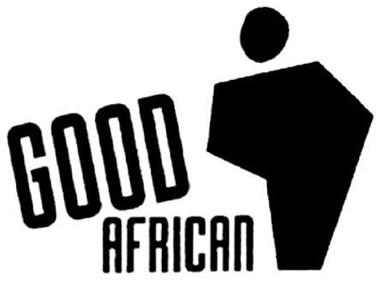
quality and well-packaged brands supported by a distinctive logo: a
stylized image of a person (as seen above) with a likeness to the
African continent (Image: UKIPO)
In the same year, the company secured its corporate name in the European Union via a trademark registration for Good African at the Office of Harmonization for the Internal Market. Moreover, having secured trademarks in key countries and regions, the company has enhanced its presence on the Internet by registering its company domain name, goodafrican.com.
In addition, the coffee producer maintains its original domain name (rwenzoricoffee.com) in order to protect all of its intangible assets. With a comprehensive IP strategy, the company has been able to commercialize its products with confidence across several countries and regions.
Environment
Falling under the Albertine Rift (arguably the most ecologically rich area of Africa), the Rwenzori Mountains region has a sumptuous flora & fauna that includes tropical forests, meadows, large mammals and many endemic bird species. This vibrant region, however, has come under increasing threat from a number of areas including poaching and habitat destruction caused by humans. Eager to maintain the Rwenzori Mountains’ impressive ecology while supporting the local farming community, GAC has worked with regional and international partners in order to implement an environmentally sustainable development strategy.
Working with Uganda’s Productive Resources Investment for Managing the Environment Project (PRIME/West), a rural development initiative that ran from 2003 to 2008 in the west of the country, and the Uganda Wildlife Authority, in 2007 the company identified a number of ecological threats in the region and developed methods for counteracting them. At the same time, the SME supported the agricultural earning potential of inhabitants of the area.
Due to the collaboration (in which costs were shared 50:50 with PRIME/West), GAC engaged in a number of activities such as re-training community members (who were also incorporated into the company’s network of producers) so that they could take up farming and abandon poaching.
Another benefit of the partnership was that biodiversity and forest management programs in the region (which included creating other job opportunities such as eco-tourism) “increased habitat under improved management in the endangered Albertine Rift eco-region, and improved economic benefits for communities, such as the production of 600 tons of Arabica coffee in the Rwenzori [Mountains area].” (United Sates Agency for International Development, Annual Report, 2007). Indeed, 107,000 hectares of environmentally sensitive habitats in the region and 98 cooperatives were supported in the same year as a result.
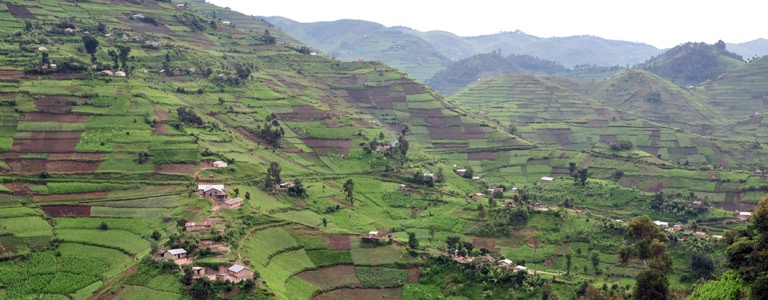
Moreover, Rwenzori Mountains’ communities have been able to re-invest their share of GAC’s profits for social and environmental programs. Encouraged by the company, farmers in the area have been trained in conservation issues including deforestation, uncontrolled grazing and bush-burning, and developing methods of soil and water management.
Furthermore, a major pillar of GAC’s rural development strategy has been to enhance producer’s capacity to make a living that is also environmentally sustainable. The company has ensured that producers are protected against historical threats to progress such as price fluctuations in the international market and indebtedness to unscrupulous lenders. GAC has implemented a policy of equitable sharing of profits with farmers while supporting their entrepreneurial aspirations through the creation of financial literacy, credit streams and individual savings accounts for producers within community banks. As of 2012, the company had worked with farmers in Kasese in a process that helped establish 17 community banks in the region.
The coffee manufacturer, in addition, pays its network of farmers 15 – 20% above market premiums for their coffee produce in order to ensure income stability. With these extra incomes, credit lines and savings, farmers have been able to make long term private investments in healthcare, home improvements, new equipment (including motorcycles for transport) and children’s education.
As one farmer in the region said, “I joined [GAC] because they were giving me a good price […] I have now managed to pay the last [term’s] school fees, I don’t have any debt.” As an extra benefit, some producers have been able to develop their entrepreneurial spirit and create new income streams via beekeeping and livestock rearing.
By enhancing the community’s capacity to live socio-economically sustained lives, GAC has ensured that vast areas of the Rwenzori Mountains are preserved for future generations of human, animal and plant life.
Business results
In the process of pioneering new models for rural development in the Rwenzori Mountains region, GAC increased its productivity and revenues and international competitiveness. Whereas the SME purchased 7,000 kg of coffee from farmers in Kasese and managed US$80,000 in annual sales shortly after its creation, seven years later (in 2011), the company purchased 430,000 kg of coffee from its network of producers and sold US$1.2 million annually.
As of 2012, coffee production in the region was expected to increase and GAC’s projected annual sales revenue was to reach US$2 million. Not only has the company increased production and revenue; in the same year the SME anticipated expansion of its brand into other products and markets. As Mr. Rugasira said, “We’re looking to get into [Good African Chocolate; Good African Tea; Good African Fruit; and Good African Music] somewhere along the line.” The company, moreover, had completed negotiations to supply coffee to a retailer in the Republic of Austria.
In addition to its business success, the company and its founder have been acknowledged by peers and become award-winners. For example, the World Economic Forum nominated Mr. Rugasira as Young Global Leader in 2007. GAC’s founder, moreover, won the Ugandan Entrepreneur of the Year (2007) prize by the Uganda Coffee Development Authority.
The company, furthermore, was one of the winners of the first Legatum Pioneers of Prosperity African Prize (2007) awarded by Legatum Limited – a private firm that supports social development projects around the world. Finally, GAC was nominated for the Financial Times/ArcelorMittal Boldness in Business Award (2010). The award identifies individuals and companies that have taken bold decisions to positively impact business.
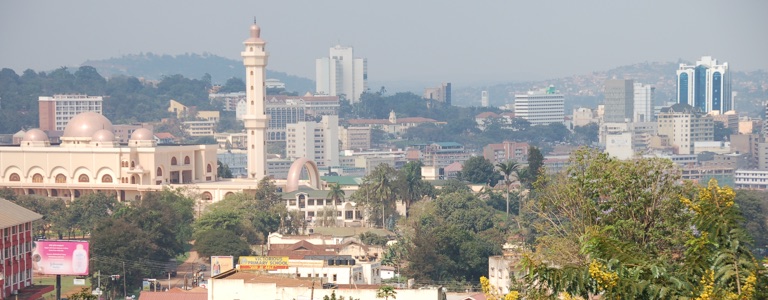
Trading for prosperity
When GAC encouraged coffee producers in the Rwenzori Mountains to adopt new farming methods and modern business principles, an extraordinary change occurred. Farmers in the region responded by improving production standards and increased their yields and incomes. In many cases, an entrepreneurial spirit was also unleashed.
With quality products supported by a trademarked brand spearheading their development, Ugandan coffee farmers have not only realized the dream of gaining direct access to new markets; they have also preserved the environment, supported their families and enhanced their sense of self-sufficiency and pride.
Source: WIPO

 Client Focus
Client Focus